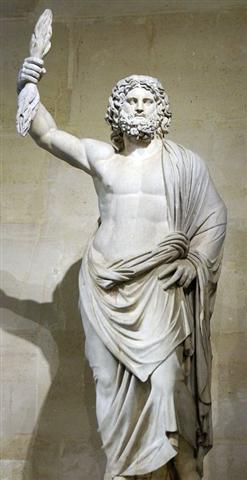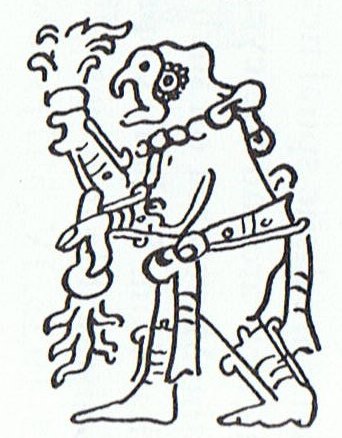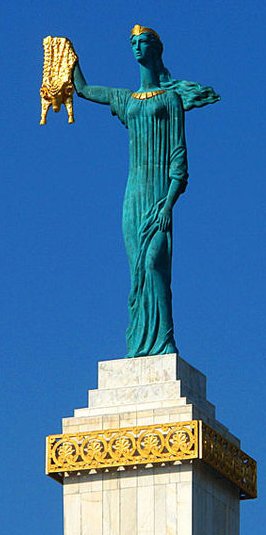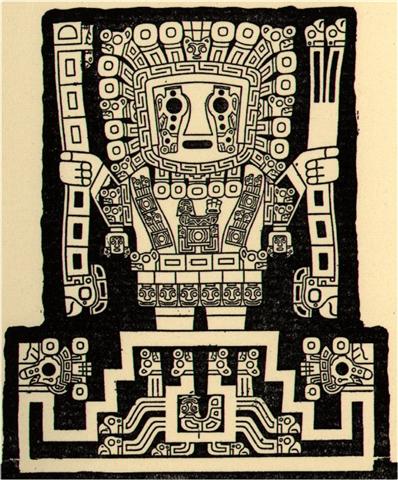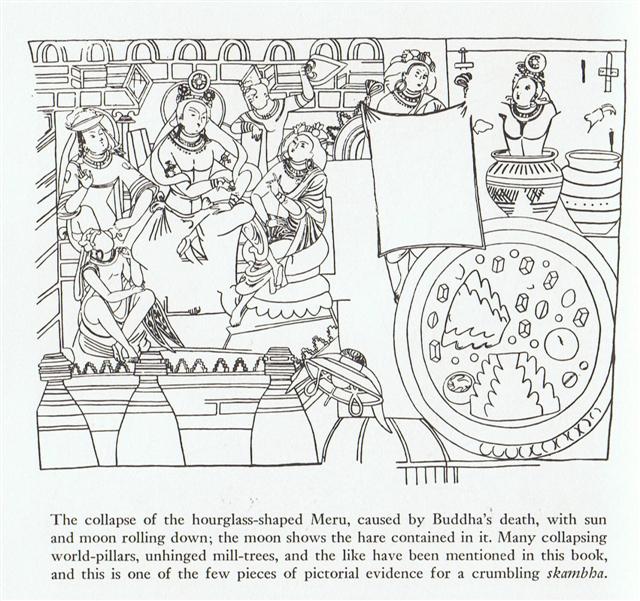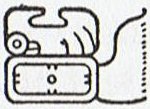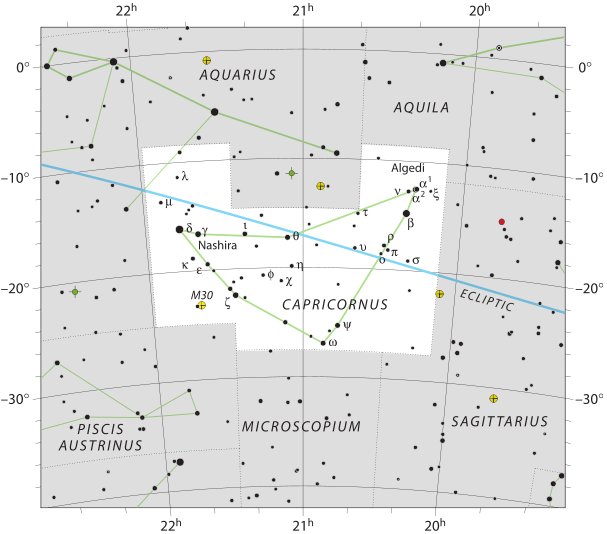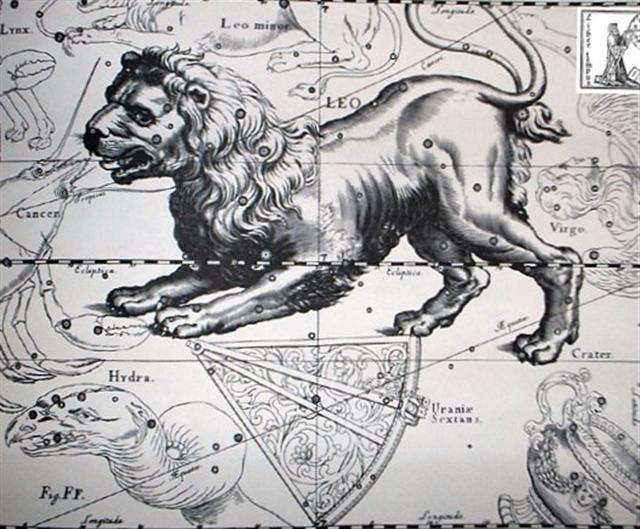Unquestionably the Lion Head (Ras El Aset) was of central importance. Final -t indicates female, like in Nut (Night):
And in Mesopotamia the Plough was above with Mother Earth below. Behind followed Downpour.
Anciently in the east man always went in front while his woman followed behind.
... A man had a daughter who possessed a wonderful bow and arrow, with which she was able to bring down everything she wanted. But she was lazy and was constantly sleeping. At this her father was angry and said: 'Do not be always sleeping, but take thy bow and shoot at the navel of the ocean, so that we may get fire.' The navel of the ocean was a vast whirlpool in which sticks for making fire by friction were drifting about. At that time men were still without fire. Now the maiden seized her bow, shot into the navel of the ocean, and the material for fire-rubbing sprang ashore ... It was well known that his behind would be wet. This was illustrated by a Jug.
"A great civilization must have preceded the vast movements of water that passed over Egypt, which leads us to assume that the Sphinx already existed, sculptured in the rock of the west cliff at Giza - that Sphinx whose leonine body, except for the head, shows indisputable signs of water erosion." (Hancock)
... When this tremendous task had been accomplished Atea took a third husband, Fa'a-hotu, Make Fruitful. Then occurred a curious event. Whether Atea had wearied of bringing forth offspring we are not told, but certain it is that Atea and her husband Fa'a-hotu exchanged sexes. Then the [male] eyes of Atea glanced down at those of his wife Hotu and they begat Ru. It was this Ru who explored the whole earth and divided it into north, south, east, and west ... Hotu. Ta.: hotu, to produce fruit, Sa.: fotu, id. Mgv.: akahotu, the September season. Churchill. H.: Hoku, Night of the full moon. When this moon set before daylight it was called Hoku Palemo, Hoku that slips away. When it set after daylight it was called Hoku Ili, grounded Hoku. Ka mahina o Hoku, the full moon of the night Hoku. Cf. hōkū, star. Hō kū, star. (PPN fetu'u). Wehewehe. Make Fruitful (Haka Hotu) → Hotu (Fruitful). Spring → Autumn (Off-spring):
As I have perceived it the outline of Cuzco was created with the male head of Leo in front and with his body changing midships into a female watery region in a way which clearly follows the pattern of constellation of Leo ('Puma'):
Cuzco was the center of Tawantinsuyu: ... The Inca kingdom was called Tawantinsuyu = 'the indivisible four quarters of the world' and the Inca himself was ruling in its center (Cuzco) ... ... In Andean thought both world and time were divided into four sectors or directions unified under a presiding fifth principle. The Tawantinsuyu - 'the indivisible four quarters' - was unified and presided over by Cuzco, the center. Similarly, history was divided into four previous ages, presided over by a fifth, the present ...
... [This is] Waman Puma's conception of the relationship between Peru and Spain according to the Andean duality principle of Hanan (Upper) and Hurin (Lower). Each country is shown as a Tawantinsuyu - four quarters with a capital in the center. Peru is higher, closer to the sun, and therefore full of gold, the 'sweat of the sun' ...
Egypt was perceived as oriented with up (male) in the south and down (female) in the north - upside down in comparison to Meso-potamia, i.e. with a single great central river instead of a surrounding pair.
Here below is an Egyptian description of the god of Eternity (Heh):
... I have copied this picture from Richard H. Wilkinson's Hieroglyfernas värld ('Reading Egyptian Art'). It comes from the back side of the ceremonial chair of Tutanchamon. The sitting person in center is the God of Eternity and he is sitting on a sign for gold (or for feast). At the ends of his outstretched arms are stylized palm branches with scores to represent the years. At the bottom of each such palm branch is a tadpole sitting on a sign representing eternity. At the beginning of eternity there were tadpoles and a human embryo 6 weeks old does look much like a tadpole:
We can also see, below his forearms, a composition incorporating the sun eye with 3 signs looking like henua above and with 3 * 3 = 9 waterlike emanations (hanging fruits, hua, off-spring) below.
... He was moreover confronted with identifications which no European, that is, no average rational European, could admit. He felt himself humiliated, though not disagreeably so, at finding that his informant regarded fire and water as complementary, and not as opposites. The rays of light and heat draw the water up, and also cause it to descend again in the form of rain. That is all to the good. The movement created by this coming and going is a good thing. By means of the rays the Nummo draws out, and gives back the life-force. This movement indeed makes life. The old man realized that he was now at a critical point. If the Nazarene did not understand this business of coming and going, he would not understand anything else. He wanted to say that what made life was not so much force as the movement of forces. He reverted to the idea of a universal shuttle service. 'The rays drink up the little waters of the earth, the shallow pools, making them rise, and then descend again in rain.' Then, leaving aside the question of water, he summed up his argument: 'To draw up and then return what one had drawn - that is the life of the world' ...
I think we should contrast the Egyptian description of Eternity (Heh) with the Olmec king high up in the center (see above) surrounded by 4 corners reminding us of the glyph type henua.
Each such irregular rectangle has a rhomb above a central eye with a teardrop below.
The central Olmec king was carrying a water serpent which had been twisted around midships, and this peculiar idea will be recognized when the swimming man is forced from backstroke to face down, which of course must be lethal, explaining the box (sarcophagus, flesh-eater) ahead:
In short:
At left there are 4 ladies forming the corners of a quincunx pattern around the King who is uplifted into the Air, and then follows the Tree with a hiding piece of cloth (maro). ... The fish came near the surface then, so that Maui's line was slack for a moment, and he shouted to it not to get tangled. But then the fish plunged down again, all the way to the bottom. And Maui had to strain, and haul away again. And at the height of all this excitement his belt worked loose, and his maro fell off and he had to kick it from his feet. He had to do the rest with nothing on ... And at the end is the Jar (Jug) first filled and then empty. High up there is a Goat head below a 2nd cross - in contrast to the empty head gear below the Midsummer Tree (where the king was dethroned).
... Hotu's canoe sailed from Maori to Te Pito O Te Kainga. It sailed on the second day of September (hora nui) ... [E:74] |
||||||||||||||||||||||||||||||||||||||||||||||||||||||||||||||||||||||||||||||||||||||||||||||||||||||||||||||||||||||||||||||||||||||||||||||||||||||||||||||||||||||||||||||||||||||||||||||

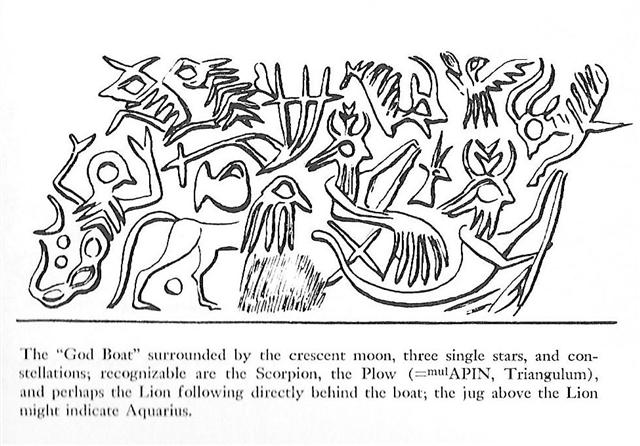

.jpg)
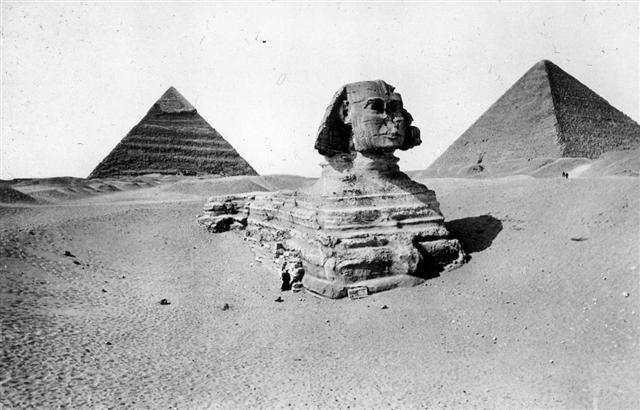
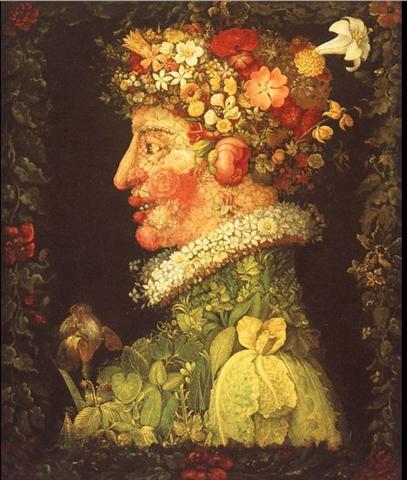

.jpg)







